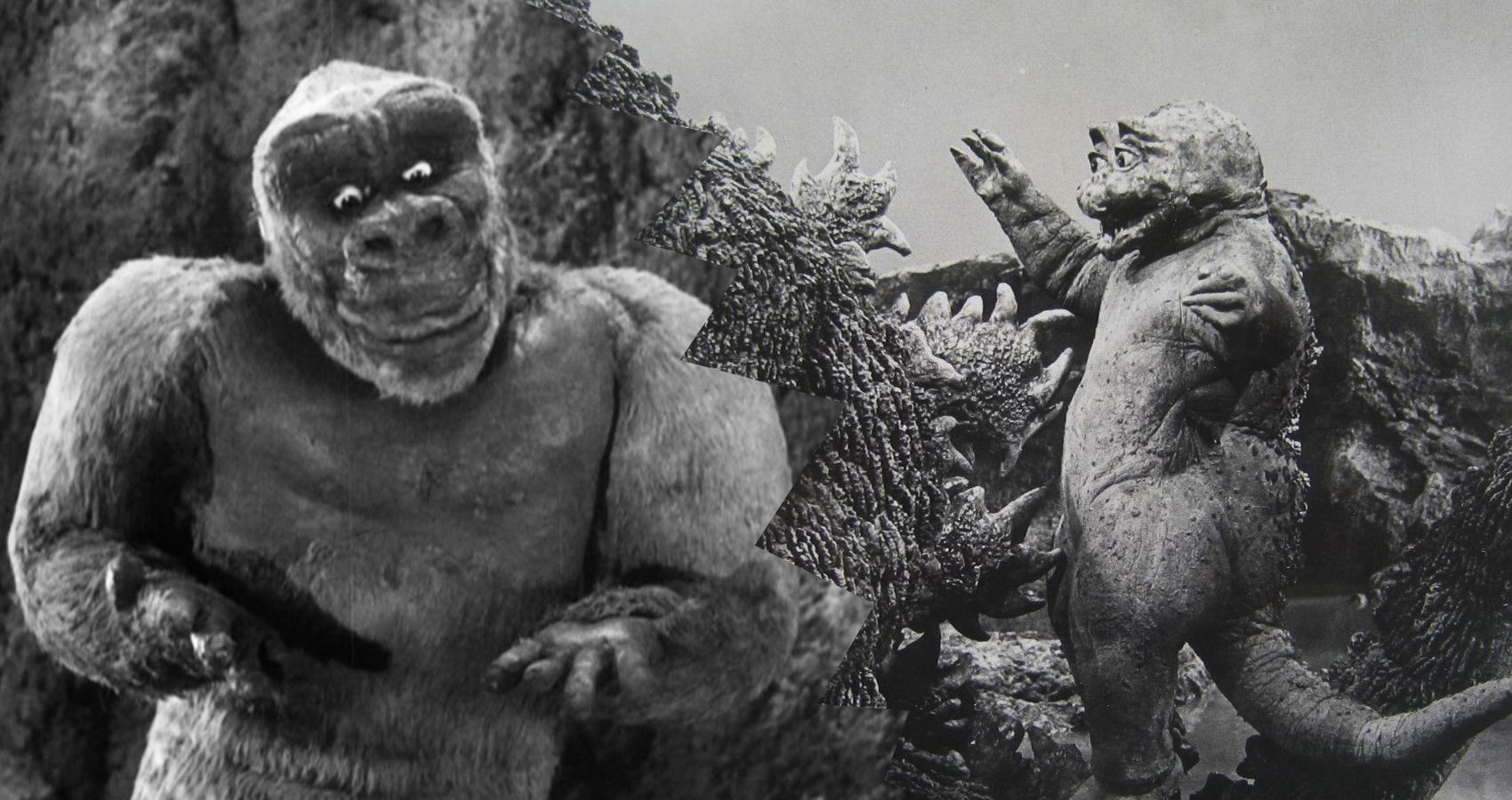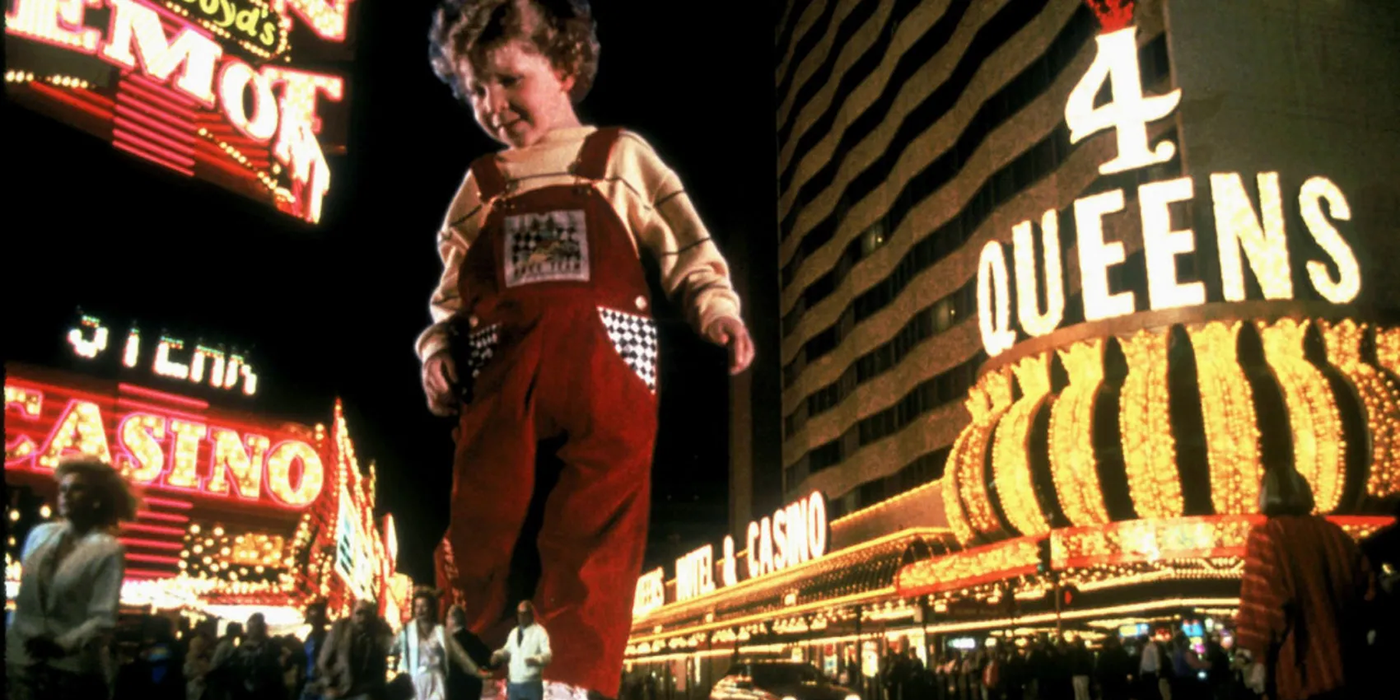Summary
- MonsterVerse fans can delve deeper into the mythology with "Monarch: Legacy of Monsters" while they wait for Godzilla x Kong: The New Empire.
- The American films focus more on visuals and entertainment, while the Japanese movies use monsters as metaphors for real-world issues.
- A comedic and kid-friendly approach with giant monster offspring could be entertaining, but also be a risky move for the MonsterVerse franchise.
It's an exciting time to be a fan of the MonsterVerse. While the teaser trailer for Godzilla x Kong: The New Empire — the sequel to Godzilla vs. Kong — gave little away earlier this year, viewers were at least gifted Monarch: Legacy of Monsters on Apple TV+ in 2023, allowing them to delve even further into the mythology around the beloved Kaiju while they wait for more big-screen entries. Then came the first full-length trailer for Godzilla x Kong: The New Empire, indicating the two Monsters would be teaming up to save humanity from a new threat — a kingdom of seemingly less nice monster gorillas. The trailer also featured a glimpse at Baby Kong, which gave credence to reports circulated last year that Adam Wingard was in talks to direct a possible "son-of" concept for which both Kong and Godzilla received treatments in 1933 and 1967.
The concept could set up some interesting dynamics that could lean either more issue-focused with parental themes or even become much more comedic, as some critics have deemed the recent films to be lacking in depth. With the unrelated Godzilla Minus One from Toho Studios dominating the worldwide box office in December 2023, there's certain to be more versions of the giant radioactive lizard on the way, too — so why not a Son of Godzilla?
American vs Japanese Monster Movies
While the American films deliver a visually perfect spectacle to consume while eating lots of popcorn and candy, the Japanese movies tend to be a little more theme heavy, using their monsters as metaphors for real-world issues. Toho Studios displayed this in 2016's Shin Godzilla, which was entrenched in the horrors of Fukushima and the black hole of bureaucracy.
A sequel to Shin was reportedly canned in 2018, with Toho shifting focus to establish their modern MonsterVerse with stand-alone films to build toward a larger crossover project. Certainly taking cues from Marvel's success with the Avengers, but mostly tweaking their own approach to a universe populated with multiple films, as Toho has been doing so since the 1950s. Their animated trilogy of the Godzilla series on Netflix also adds to the growing volume of Godzilla content, servicing anime fans with a tonally unique take on the franchise.
Fans of Godzilla and King Kong are often lumped together for obvious reasons. However, the two franchises have distinctly different histories, with one hailing from the East and the other from the West. For starters, Godzilla's inventory far exceeds Kong's. The giant ape has ten films (two of which were made by Japan), including the upcoming Godzilla x Kong: The New Empire. Godzilla has a whopping thirty-four installments. Toho defined the Kaiju genre, which until recently was exclusive to the East, and for some purists, remains that way.
Unfortunately, with the advent of CGI, we will naturally see fewer performers in rubber suits crashing into pyrotechnic-packed cityscapes. Still, it's doubtful the art form will disappear forever, considering decades of perfecting practical Eastern filmmaking techniques. Let's take a look at some of the franchise's tonal shifts, the thematic meaning behind the monsters, and what may be in store for the future of these titular titans.
Meaningful Monsters
Perhaps the most obvious metaphorical monster in the history of Godzilla movies is Hedorah, A.K.A. The Smog Monster. What did Hedorah represent? Well, pollution. So obvious, in fact, that the notion of metaphor monsters possibly became a divisive issue for the filmmakers who were tasked with building these enormous projects for the masses and feared becoming too political. Godzilla himself was a clear response to nuclear weapons but didn't telegraph its meaning at first glance. Why subtlety should matter in the realm of giant monsters is a question worth asking. Impregnating these beasts with political meaning may also pack a double dose of absurdity and unintentional humor that Trey Parker and Matt Stone of Southpark fame may have caught onto.
Back in 2006, the comedic duo were developing a project titled Giant Monsters Attack Japan, which may or may not still be heading toward a theater or streaming service in the future. The most recent reports claim the project may now be animated. Godzilla is right at home in the ever-growing ironic and contemporary comedy sub-genre of "so-bad-it's-good." In comedy, it may be an easier pill to swallow having an enormous beast represent global warming or racism. There's a giant monster just waiting to be personified. In 2007, Big Man Japan was released, a parody film from the Japanese that poked fun at the Kaiju genre in ways that would speak to Japanese audiences but not necessarily Americans.
Giant Babies Attack
Should the next installment of Legendary's MonsterVerse go in the direction of Kaiju-sized offspring, they may take a cue from 1969's Godzilla's Revenge, AKA All Monsters Attack. This was Toho fully embracing the fact that Godzilla was resonating heavily with children, so why not make it a kid's movie? Godzilla's Revenge may be regarded by fans as one of the worst entries in the series for breaking form, but for others, it is the most re-watchable and hilarious of all the films. Legendary attempting a mega-budget approach to a more kid-friendly comedic formula would certainly entail a high degree of risk that could alienate their core audience. But if handled well, the movie could be incredibly entertaining.
1992's Honey, I Blew Up the Kid is the closest thing that comes to mind for American cinema attempting something like this. The eventually successful sequel to Honey, I Shrunk The Kids featured a Kaiju-sized toddler tearing his way through Las Vegas with catastrophic temper tantrums and meltdowns, a movie worth revisiting. A bold decision to go much lighter with the tone could inject a needed dose of humility into the franchise.
While there's no official confirmation — other than the glimpse of Baby Kong in the Godzilla x Kong: The New Empire trailer — that the studio will gift audiences with sole films based on baby Kaiju, it will be interesting to see what unfolds next.


